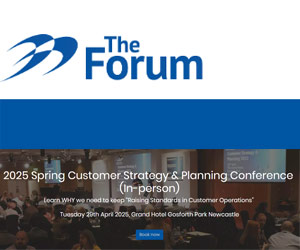Playvox shares tips for improving customer surveys and lots of extra voice of the customer (VoC) advice.
You know your customers. You spend hours obsessing over every aspect of their interaction with your brand, because you know that a great customer experience is a near-guarantee of customer retention and expansion.
Your careful planning can seem all for naught after an influx of negative feedback from customers. Where did it all go wrong, and what do you do next?
You can keep a constant pulse on customer satisfaction by asking the right questions at the right points in time.
With effective VoC surveying in place, you’ll refine your understanding of your customers, identify breaking points in your current customer experience, and ultimately grow your bottom line.
Whether you’re building out or building upon your current strategy, consider these four tips for capturing valuable customer insights through expertly crafted surveys.
Humanize the Look and Feel of Your Surveys
First and foremost, people want to talk to people. In an age where bots dominate, customers are more likely to engage with your survey and provide candid feedback when it looks like a human is asking, listening and responding.
This is especially true during moments of high tension, when a customer is struggling with a key feature or a lost order for a birthday. Even the illusion of communicating with a real person can make a customer feel heard, and open up the channels for product and relationship improvements.
Make surveys feel more human by including an agent’s profile photo, and social media-style biography. Research suggests agent-centric surveys humanize feedback collection and better illuminate customer sentiment.
This personalized approach increases survey response rates dramatically (as much as 4x compared to industry benchmarks), and gives your customer service a more personalized, high-touch feel.
- Tip 1: Let the customer know who the survey is from.
- Tip 2: Use your customer’s name and other relevant details, such as where they work.
- Tip 3: Use a conversational tone.
- Tip 4: Tell your customer how much you appreciate them and that you value their perspective.
Don’t Avoid the Hard Questions
Solid understanding of your customer isn’t achieved solely through surveys seeking positive feedback—only fairies survive on applause alone.
Ask customers if they are unhappy with the new user interface you just rolled out. Are they comfortable with the price of your platform? Does a feature created to make their life easier actually make it harder? Don’t be afraid to ask the hard questions; constructive criticism is necessary to smooth out rough patches for future customers.
Positive feedback is still completely essential in the VoC big picture. If you know where customers are truly finding value and benefiting from your product, you’ll want to identify why so you can build upon that even more.
Leverage both CSAT (Customer Satisfaction) and DSAT (Customer Dissatisfaction) surveys throughout your customer’s interactions to minimize churn and improve overall experience.
Example CSAT Questions:
- When you think about our company, product, or service, what comes to mind?
- How easy is it to deal with our company?
- Did you feel confident in your customer service agent’s ability to help you?
- How much did you feel our service member wanted to assist you?
- What might prevent you from doing business with us over time?
- How likely are you to switch to another brand, company, product, or service?
- Did anything slow you down from completing your purchase?
- How can we improve or do better next time?
Ask, Then Ask Again (and Again)
Follow-up is key when it comes to creating effective surveys, with the subsequent survey being just as important as the initial one in measuring customer satisfaction.
One-off sends aren’t fast enough in the race to understand VoC. By the time you’ve analysed the results from your first survey and prepared a follow-up questionnaire, your customer might have already left you for another option.
To get the most accurate reading on your customers and their sentiments towards your business, you’ll want to automate the delivery of a series of surveys based on their initial interaction.
Suppose a customer reaches out concerned about the amount they were billed last month. You can automatically send follow-up surveys at later points in time asking if they were happy with the customer service they received around that issue, why the price point is of concern, and so on.
Whatever tools you use to deliver your survey series, be sure that triggers and filter conditions are in place to send the right surveys to the right customers at the right time. See how this type of automation works in action.
Key Takeaways
Provide your customers an opportunity to share their feedback:
- Quarterly if they use or interact with your product frequently
- Every six months if your product or service is used less often
- Each time your customer engages in a key touchpoint, such as makes a purchase or a return
- When there’s a company-wide issue that may affect them directly
- If there’s a broader trend that may impact your product or service
- When a customer shows intent to take an action, such as make a purchase, but doesn’t complete the action
Use Surveys To Support, Not Just Collect, Feedback
A recent Hubspot article cites “lack of proactive support” as a top reason for customer churn. Effective VoC capture isn’t about collecting data through endless surveys. It’s about proactively understanding the customer through the feedback they provide, and supporting them throughout their lifecycle.
You can expect that as your business changes, your customer’s experience will change, too. Some of the questions you ask in your VoC surveys might be evergreen, but chances are you’ll add a new feature or service that you’ll want to gather feedback around, too.
Work closely with your product and marketing teams to understand when product rollouts and improvements are scheduled so you can prepare to evolve your survey questions and support your customers through what will likely be an adjustment period.
Key Questions for New Product Introductions or Improvements
New:
- How do you plan to use our product or service?
- What kind of experience are you expecting to have?
- What would motivate you to buy this?
Improvements:
- If you had a magic wand, what would you change next about the product?
- If this product or service ceased to exist, how would that affect you?
- If you have ever tried out an alternative to our product, what motivated you to do that?
Solid surveying for VoC helps your business hone its product or services, or pivot into something that customers truly want, use and evangelize on your behalf.
Author: Guest Author
Published On: 18th Mar 2021 - Last modified: 24th Mar 2021
Read more about - Guest Blogs, Playvox



































